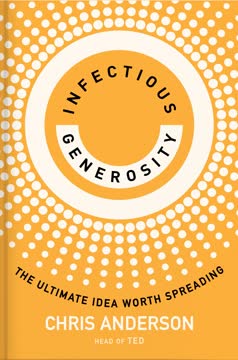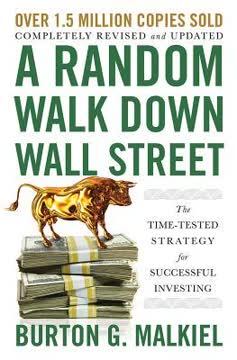つの重要なポイント
1. 子供に早期からお金の教育を始めることで生涯の習慣を形成する
ウィスコンシン大学マディソン校の研究者によると、3歳という若さでも、多くの子供たちは価値や交換といった経済的な概念を非常に初歩的な形で理解することができるという。
早期の金融教育は重要です。 3歳の子供でも基本的な経済概念を理解でき、生涯にわたる金融習慣の基盤を築くことができます。日常の活動や会話を通じて、貯金、支出、共有といったシンプルなアイデアを紹介しましょう。
- お小遣いのための3つの瓶システムを使用する:貯金、支出、共有
- お金に関連するゲームをしたり、基本的な金融概念についての本を読む
- 食料品店での価格比較など、簡単な金融決定に子供を参加させる
お金の話を家族生活の自然な一部にすることで、親は子供が早期から健全な金融関係を築くのを助けることができます。
2. 具体的な目標とマッチングプログラムを通じて貯金を奨励する
複利はいつかあなたを裕福にすることができます。
貯金を具体的で報酬のあるものにする。 子供たちに具体的な貯金目標を設定し、複利の力を理解させましょう。視覚的な補助具や実際の例を使って、お金が時間とともにどのように成長するかを示します。
- 特定の目標に向けた進捗を追跡するための貯金チャートを作成する
- 貯金を奨励するためにマッチング寄付を提供する(例:1ドル貯めるごとに50セントを追加)
- オンラインの複利計算機を使用して長期的な成長の可能性を示す
定期的な貯金習慣を奨励し、マイルストーンを祝うことで、自信を築き、金融成功のための遅延満足の重要性を強調します。
3. 年齢に応じた責任を通じて強い労働倫理を育む
家事は日常の家族生活の一部であるべきです。
家事を通じて責任感を養う。 子供に年齢に応じたタスクを割り当て、家族に貢献する役割を強調します。これにより、強い労働倫理が育まれ、努力の価値が教えられます。
- 明確な期待と期限を持つ家事チャートを作成する
- 子供が成長するにつれて責任を徐々に増やす
- 労働とお金を稼ぐことの関係について話し合う
家事はお小遣いと直接結びつけるべきではありませんが、追加のタスクや起業活動を通じて子供が追加のお金を稼ぐ機会を提供することを検討してください。これにより、労働と金融報酬の関係を理解するのに役立ちます。
4. 賢い債務管理と過剰支出の危険性を教える
何かを買う余裕がなく、クレジットカードで購入すると、請求書が来たときに全額を支払うことができません。その結果、高額な利息が課され、数百ドル、場合によっては数千ドルに達することがあります。
責任あるクレジットの使用を強調する。 ティーンエイジャーや若い成人にクレジットカードの潜在的な落とし穴と高利息の債務を避ける重要性を教育します。良い債務(例:教育のための学生ローン)と悪い債務(例:不要な購入のためのクレジットカード残高)を区別する方法を教えます。
- 利息がどのように機能するかと、残高を持つことの真のコストを説明する
- 日常の支出にはデビットカードや現金を使用することを奨励する
- 予算管理スキルを教え、過剰支出やクレジットへの依存を避ける
債務の長期的な影響を理解することで、若者はより情報に基づいた金融決定を下し、一般的な金銭的な罠を避けることができます。
5. 賢い消費者習慣と金融意思決定スキルを育む
広告を信じるな。
支出に関する批判的思考を育てる。 子供たちにマーケティング戦術を疑問視し、情報に基づいた購入決定を行うよう教えます。欲しいものと必要なものの違いを理解させます。
- 広告を一緒に分析し、説得技術について話し合う
- 購入前に価格や機能を比較する
- 高額なアイテムのために調査し、貯金することを奨励する
遅延満足を実践し、金融決定における忍耐の価値を教えます。これにより、子供たちは衝動的な支出に対する抵抗力を育み、思慮深い金銭管理スキルを養うことができます。
6. 金融の安全のために必要な保険を優先する
親であるなら、家族の誰かが病気や怪我をしたり、さらには亡くなったりした場合に備えることが仕事の一部です。
金融的な災害から守る。 家族の金融的な安定を守るために必要な保険を理解し、取得します。家族のニーズに基づいて健康保険、生命保険、障害保険を優先します。
必要な保険の種類:
- 健康保険
- 生命保険(扶養家族がいる収入稼ぎ手のため)
- 障害保険
- 財産保険(住宅所有者/賃借人)
保険の概念を年長の子供に説明し、金融計画とリスク管理におけるその役割を理解させます。
7. 長期的な成長のために低コストのインデックスファンドに賢く投資する
最もシンプルなものが最も賢い選択です。401(k)やIRAを持っているかどうかに関わらず、最良の投資選択は同じです:低コストのインデックスファンド。
シンプルで低コストの投資を受け入れる。 長期的な富の構築のために、広範な市場のインデックスファンドに焦点を当てます。これらは分散を提供し、通常はアクティブに管理されているファンドを長期的に上回ります。
投資の基本原則:
- 複利成長を活用するために早期に始める
- 退職口座(401(k)、IRA)に定期的に寄付する
- 低コストのインデックスファンドやETFを選ぶ
- 市場のタイミングを避け、長期的な視点を持つ
年長のティーンエイジャーや若い成人に投資の基本を教育し、早期に始め、一貫性を持つことの重要性を強調します。
8. 慈善寄付を通じて寛大さと社会的責任を育む
研究によると、慈善寄付は、特に強制ではなく自発的な場合、人々を実際に幸せにすることが示されています。
寄付の心を育てる。 子供たちに資源を共有し、他者への共感を育むよう奨励します。これは社会に利益をもたらすだけでなく、個人の幸福にも寄与します。
慈善寄付を促進する方法:
- お小遣いの一部を寄付のために取っておく
- 家族として一緒にボランティア活動をする
- 一緒に慈善団体を調査し、選ぶ
- 寄付が寄付者と受益者の両方に与える影響について話し合う
寄付を金融の話題や活動の一部にすることで、親は子供が社会的責任に対する生涯のコミットメントを育むのを助けることができます。
9. 大学の資金調達を戦略的に行い、価値を最大化する
新しい大学生の平均的な借金額は約37,000ドルです。しかし、あなたの子供が化学工学、形而上学、またはエドナ・セント・ビンセント・ミレーの作品における名前の起源についての驚くべき理解を持って学校を卒業したかもしれませんが、彼はおそらくそのローンを返済する方法に困惑しているでしょう。
大学費用の計画を慎重に行う。 早期に貯金を始め、すべての資金調達オプションを検討して借金を最小限に抑えます。学生ローンの長期的な影響を理解し、大学の選択や専攻について情報に基づいた決定を下します。
大学資金調達の戦略:
- 税制優遇のある529プランを利用する
- 奨学金や助成金に応募する
- コミュニティカレッジや州内のオプションを検討して費用を削減する
- 異なる種類の学生ローンと返済オプションを理解する
ティーンエイジャーと大学費用、キャリア目標、異なる教育パスの投資収益率についてオープンに話し合います。
10. 親として良い金融行動を模範する
お金の天才でなくても、お金の天才を育てることができます!
模範を示す。 子供たちは主に親の行動を観察することで金融習慣を学びます。自分自身の生活で責任あるお金の管理を実践し、年齢に応じた金融の話し合いや決定に子供を参加させます。
良い金融行動を模範する方法:
- 家計予算を作成し、それを守る
- 金融目標やトレードオフについてオープンに話し合う
- 支出を抑え、貯金を優先する
- 金融の失敗を認め、そこから学ぶ
ポジティブなお金のマインドセットを育み、健全な金融習慣を実践することで、親は子供が生涯にわたる金融成功を収めるための基盤を築くことができます。
最終更新日:
FAQ
What's Make Your Kid A Money Genius (Even If You're Not) about?
- Focus on Financial Literacy: The book is a comprehensive guide for parents to teach their children about money management from preschool through young adulthood.
- Age-Appropriate Lessons: It breaks down financial concepts into age-appropriate lessons, covering topics like saving, spending, debt, and investing.
- Practical Strategies: Beth Kobliner provides practical strategies and real-life anecdotes to help parents engage their children in meaningful conversations about money.
Why should I read Make Your Kid A Money Genius (Even If You're Not)?
- Essential for Modern Parenting: Understanding money is crucial for success in today’s complex financial landscape, and this book equips parents with the tools to teach essential financial skills.
- Expert Insights: Written by Beth Kobliner, a recognized expert in personal finance, the book combines humor with practical wisdom.
- Builds Confidence: It helps parents feel more confident in discussing financial topics with their children, even if they are not financially savvy themselves.
What are the key takeaways of Make Your Kid A Money Genius (Even If You're Not)?
- Start Early: Teaching kids about money should begin as early as preschool, as many financial habits are formed by age seven.
- Encourage Saving: The book emphasizes the importance of saving and provides strategies to help kids learn to delay gratification.
- Avoid Debt: Kobliner stresses the dangers of debt and provides guidance on how to avoid it, highlighting the importance of living within one’s means.
What are the best quotes from Make Your Kid A Money Genius (Even If You're Not) and what do they mean?
- “The stakes have never been higher.”: This quote underscores the urgency of teaching financial literacy in a world where financial independence is increasingly necessary.
- “You don’t need to be a money genius to make your kid a money genius.”: It reassures parents that they don’t need to be experts in finance to teach their children.
- “It’s good to have savings for saving’s sake, too.”: This emphasizes the importance of having savings beyond just for specific purchases, teaching kids the value of a financial cushion.
How does Make Your Kid A Money Genius (Even If You're Not) suggest parents start teaching their kids about money?
- Begin with Basic Concepts: Start with simple concepts like the difference between wants and needs, using everyday situations as teaching moments.
- Use Everyday Situations: Discuss the cost of groceries or explain why a toy can’t be bought to reinforce financial lessons.
- Engage in Conversations: Open dialogue about money is crucial, and parents should feel comfortable discussing their own financial decisions and mistakes.
What age groups does Make Your Kid A Money Genius (Even If You're Not) cover?
- Preschool to Young Adulthood: The book addresses financial education for children from ages 3 to 23, with each chapter tailored to specific age groups.
- Age-Specific Strategies: For preschoolers, the focus is on basic concepts like saving, while older children learn about credit, debt, and investing.
- Lifelong Learning: It encourages parents to continue financial discussions into young adulthood, recognizing that financial education is a lifelong process.
What specific methods does Make Your Kid A Money Genius (Even If You're Not) recommend for teaching kids to save?
- Use Visual Aids: Jars or piggy banks can visually represent savings goals, helping children understand the importance of allocating their money.
- Set Savings Goals: Encourage children to set specific savings goals, teaching them the value of delayed gratification and the satisfaction of reaching a goal.
- Incorporate Family Savings Projects: Involve children in family savings projects, like saving for a vacation, to teach about saving and foster teamwork.
How does Make Your Kid A Money Genius (Even If You're Not) address the topic of debt?
- Understanding Debt: The book explains debt in simple terms, emphasizing the importance of understanding interest rates and repayment terms.
- Avoiding Credit Card Debt: Kobliner stresses avoiding carrying a balance on credit cards, reinforcing the idea of living within one’s means.
- Teaching Responsibility: Parents are encouraged to teach children about the responsibilities of borrowing money, including the consequences of missed payments.
What practical advice does Make Your Kid A Money Genius (Even If You're Not) offer for handling allowance?
- Be Clear and Consistent: Establish clear guidelines for allowance, including what it covers and how much is given, to help children understand budgeting.
- Encourage Saving: Suggest saving a portion of the allowance, teaching kids the importance of setting aside money for future needs.
- Link Allowance to Responsibilities: While not tying allowance to chores, encourage kids to take on extra jobs for additional income, fostering responsibility.
How can parents use Make Your Kid A Money Genius (Even If You're Not) to improve their own financial literacy?
- Learn Alongside Your Kids: Engaging in financial discussions with children can enhance parents' understanding of money management.
- Access to Resources: The book provides a list of resources for further reading, which parents can use to deepen their financial knowledge.
- Practical Application: Applying the lessons learned to their own financial situations can improve parents' money management skills and set a positive example.
What financial habits should I instill in my elementary school child according to Make Your Kid A Money Genius (Even If You're Not)?
- Encourage Saving: Teach them to save a portion of their allowance or gifts, reinforcing the habit of saving for future purchases.
- Discuss Needs vs. Wants: Help them differentiate between needs and wants, fostering critical thinking about spending decisions.
- Introduce Basic Budgeting: Show them how to allocate their allowance for different purposes, instilling a sense of financial responsibility.
What investment concepts should I explain to my middle schooler according to Make Your Kid A Money Genius (Even If You're Not)?
- Understanding Stocks: Explain that stocks represent ownership in a company and can lead to financial growth over time.
- Importance of Diversification: Teach the principle of not putting all eggs in one basket, emphasizing risk reduction through diversified investments.
- Introduce Index Funds: Discuss index funds as a simple way to invest in a broad market, making investing easier to understand without picking individual stocks.
レビュー
本書『Make Your Kid A Money Genius (Even If You're Not)』は、実践的なアドバイス、わかりやすい形式、年齢に応じた指導が評価され、主に好意的なレビューを受けている。多くの読者は、親と子供の両方にとって役立つと感じ、会話調のトーンや実際の例が好評だ。一部の読者は、本書がアメリカの金融状況に焦点を当てている点を指摘し、他の読者はお金に関するさまざまなトピックを包括的にカバーしている点を強調している。批評家の中には、大学の貯蓄に重点を置いていることや、時折見られる文化的な配慮の欠如を指摘する者もいるが、全体として、子供にお金の管理を教えるための貴重なリソースとして推奨されている。
Similar Books














